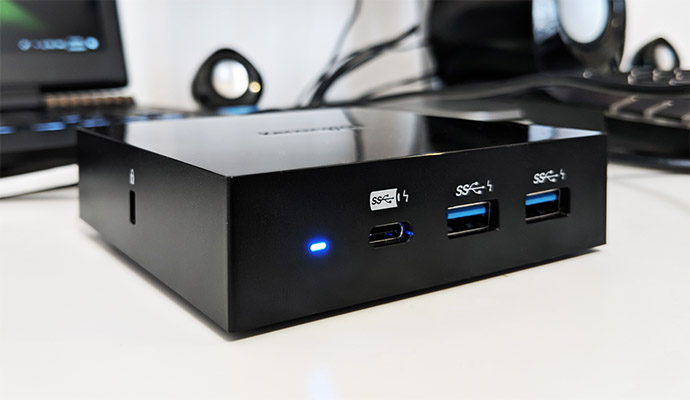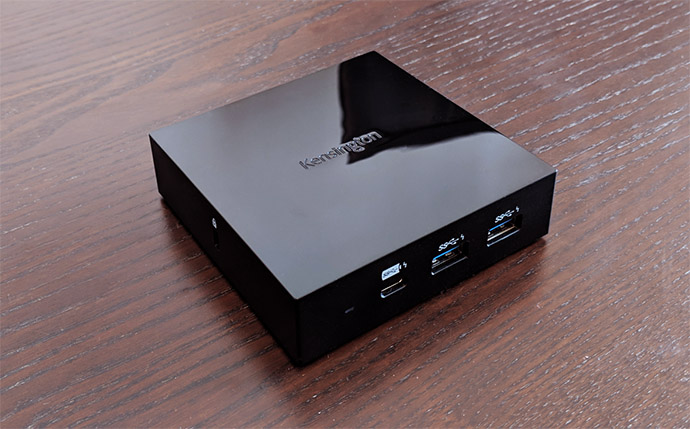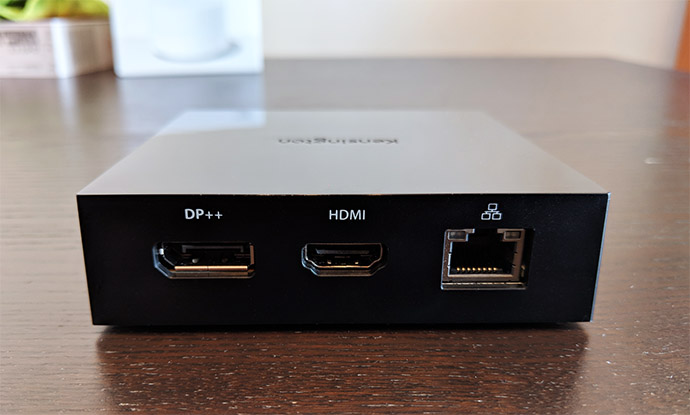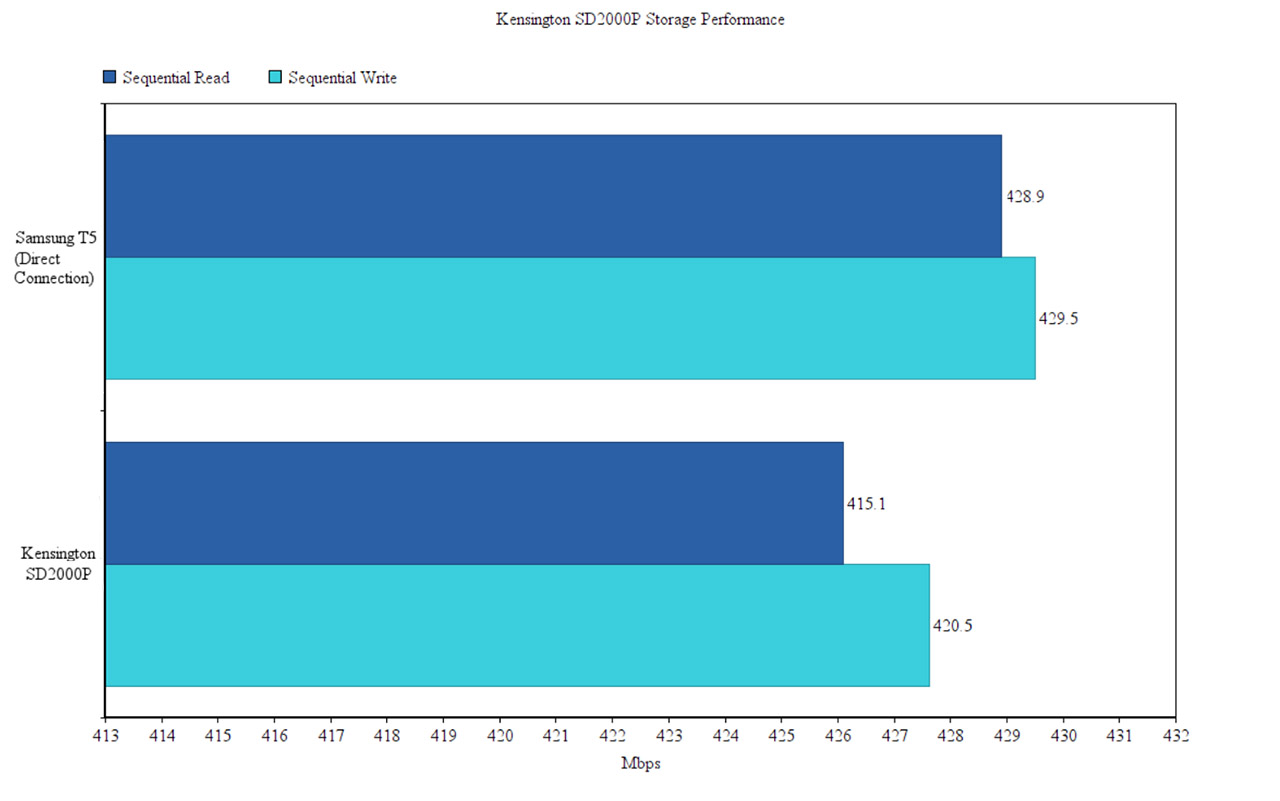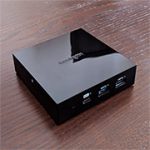Kensington just released the SD2000P USB Type-C 4K NanoDock and it’s a small form-factor device, mostly suitable for those that want an easy way to stream 4K content from their laptops to a larger screen, but also for connecting more peripheral devices to a slim ultrabook (which usually only offers a couple of type-C USB ports). I already had a look at the Kensington SD5200T and the SD1600P, the former being a Thunderbolt 3 docking station which was more than capable to carry two monitors at a 4K resolution and it could also recharge the battery of your laptop, while the latter focused a lot more on portability, supporting pass-through power and handling only a single 4K monitor.
| Kensington SD2000P | |
|---|---|
| Amazon.com | Check Offer |
The Kensington SD2000P falls somewhere in the middle, offering a similar set of features as the portable SD1600P, but, it also comes with a power brick to recharge the battery of all your connected devices, just like the SD5200T (but, it’s not a Thunderbolt 3 dock). While a few years ago most people would take a quick glance at the (then) latest notebooks that started to strip their USB port (as well as the Ethernet port) and were convinced that this is just a passing fad, well, we’ve gotten to the point were we have to accept the fact that slim notebooks and docks/dongles do come together now.
The reason for that is portability, which required the removal of larger ports (USB type-A and even Ethernet) in favour of the newer, better and smaller USB type-C ports. Unfortunately, the accessory market didn’t keep up, so, the large majority of peripheral devices are still using the old USB standard. That’s why docks like Kensington SD2000P will be a necessity for a long time (until every accessory will be able to connect wirelessly using some probably-not-yet-invented reliable protocol), that is, if you use an ultrabook – the gaming laptops have a larger array of ports.
The SD2000P looks nothing like the other available docks from Kensington, steering clear of the rectangular cases with rounded corners and instead opting for a simple square box, half the size of the SD5200T (the NanoDock measures 3.77 x 3.77 x 0.78 inches). But don’t be fooled, the SD2000P is surprisingly stylish, the entire case looking like it’s made of a single piece (although, it’s not), with the top surface being covered by a glossy black finish (it is a magnet for dust), while the lateral sides are matte black and the bottom area is covered by a soft-to-the-touch coating.
The Kensington SD2000P can be carried around, but, if you need the power brick, it’s really not that portable, so, in this regard, it belongs to the stationary docks category, which works better if left on the desk with all your peripherals attached, therefore easily creating a plug-and-play system with your laptop. It’s important to know that if you don’t need to charge your laptop’s battery, then the Kensington SD2000P will work just fine using the computer’s battery (so you don’t need to carry the power brick around if you don’t have to).
I have actually searched for any silicone feet which would ensure that the device doesn’t budge when multiple cables are connected, but it seems that Kensington decided not to include them, instead, on the bottom, it has added four holes where you can attach the VESA mounting plate, so the dock can easily be mounted on the back of a monitor (be aware that the plate is sold separately). To power up the SD2000P NanoDock, you need to connect it to the power brick and, when it’s turned on, you’ll see a small bright blue LED on the front side of the dock (based on the Kensington logo carved on the top of the device). Next to the LED, there’s a USB type-C port that uses the Power Delivery tech, so it can recharge the battery of your devices (I connected a Google Pixel 2 XL and it showed me that it was charging rapidly, which means that it supports fast charging – 5V/3A) and two USB type-A 3.0 ports also suitable for recharging the battery of a couple of your devices (5V/2.4A – support up to 5Gbps transfer rate).
On the right side, there’s the DC-In Power port and next to it, there’s another USB type-C port which, as the icon suggests, is suitable to connect your laptop, since it can deliver up to 60W of power. The SD5200T offers up to 85W which is more than adequate for charging up a 15-inch MacBook Pro, so are 60W enough? When the computer is not under load, it will need about 30W to remain powered on, so 60W could be enough to recharge the battery of the laptop under moderate use (no gaming or heavy editing).
Note: The Kensington SD2000P is not a Thunderbolt 3 dock, but it will still connect to laptops that have this type of ports, it will just be limited to the performance of the USB-C 3.1 (5 Gbps instead of the 40 Gbps of the Thunderbolt 3).
On the rear side, the SD2000P offers a DisplayPort v1.2++ for connecting your ultrabook to a 4K display (4096 x 2160p), but it only supports up to 30 Hz, which is not really that much of a problem if you use it in an office or for image editing, but, if you intend to watch a movie or run a game, the 30 Hz refresh rate will not look good, so you may either want to use a monitor at a lower resolution (1440p or 1080p) or simply opt for a more powerful docking station. Next to the DisplayPort, there’s an HDMI v1.4 port that also support a refresh rate of up to 30Hz on a 4K monitor, but, unfortunately, the SD2000P cannot handle two monitors at the same time, so you have to choose between the HDMI or DisplayPort connection.
Furthermore, the dock is equipped with an Gigabit Ethernet port, so, if the WiFi signal is not that great, you can connect your slim laptop or smartphone to the more reliable wired LAN through the SD2000P (but, I noticed that only the device connected to the main USB-C port will gain access to the Internet). The last area of interest is on the left side, where you can find a Kensington Security Slot (the feature that made the company famous world-wide).
Since a lot of users will connect an external SSD or HDD to the Kensington SD2000P, I decided to test the storage performance of the dock. To do so, I took a Samsung T5 external SSD drive (256 GB) and first, I tested its read/write performance while directly connected to the laptop (using a USB-C port, not a Thunderbolt 3). This gave me the following results: the sequential read speed was 428.9 Mbps and the sequential write speed was 429.5 Mbps. Afterwards, I connected the dock to the laptop and the T5 SSD drive to the dock and ran the same test: this time, the sequential reading speed was 415.17 Mbps, while sequential writing speed was 420.56 Mbps (as can be seen, the dock almost made no difference, so it will have little to no impact on the performance of your connected storage devices).
Conclusion
If you have a slim ultrabook, you’re obviously going to have to use a dock to connect your peripherals, but the Kensington SD2000P is not just another docking station, it’s a well crafted minimalist device which can either be portable or stationary (depending if you need to recharge the battery of your laptop or not), so it encourages a plug-and-play system, where you can easily hot swap your laptop using a single cable. Sure enough, the dock does come with the bare minimum of USB ports and there are no audio ports, but the SD2000P was created to offer a reliable connection to an external 4K monitor (at 30 Hz) and to power up a smaller laptop, while also connecting to the Internet, so, if this is what you need from a docking station, then the SD2000P will do its job perfectly fine.
Check out the product here:

Mark is a graduate in Computer Science, having gathered valuable experience over the years working in IT as a programmer. Mark is also the main tech writer for MBReviews.com, covering not only his passion, the networking devices, but also other cool electronic gadgets that you may find useful for your every day life.

